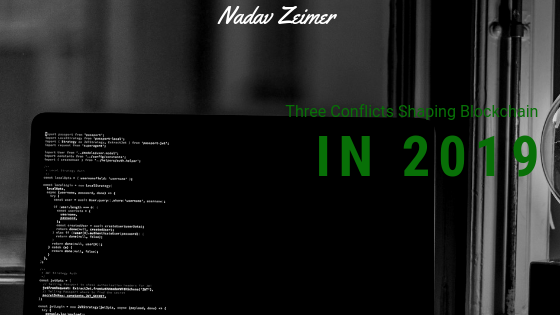For the first three quarters of 2018, blockchain startups had around $3.9 billion in venture capital funding. While this number is expected to grow throughout 2019, that doesn’t mean the technology is without its challenges. Here are three areas where blockchain and cryptocurrency may face conflict this year.
Security and usability
There is no doubt that bitcoin remains the most secure computer network on the planet. That being said, all other blockchains as well as crypto wallets and exchanges have proven to be lacking in security. The management of private keys is central to security in blockchain and also leads to challenging usability issues across the board. Some “second layer” solutions are being built on top of bitcoin because of its security (eg the Lightning Network) but these have yet to prove themselves. To get more people using cryptocurrency, they need to improve the security and usability of crypto wallets and exchanges, in particular. These third party crypto service providers are in need of an easy-to-use interface, a transaction process with no default, and stable management of private keys. In many cases, the security concern with cryptocurrency arises from the provider that holds your crypto and the chance they’ll be hacked, and not with the currency itself. While some people opt to hold their own currency, this results in reduced usability and adoption. The need for improved security measures also lessens the usability of specific platforms like bitcoin and is part of the reason why third-party applications are working on making cryptocurrency more approachable.
Regulation and investment
The laws and regulations that will affect blockchain this year will likely be further developments on 2018 reforms. Laws will have to evolve to accommodate cryptocurrency and blockchain among already existing rulings on virtual currencies. The SEC is currently pushing to define cryptocurrencies as securities so ICOs and Security Token Offerings can be regulated using the same channels as financial markets as a whole.
Regarding investment, it’s still unclear whether there is even any interest in the market. The combination of smarter investors and more specific regulations will likely cause a reluctance to turn to ICO’s to fundraise. While they can be an excellent option for raising money, they’re only a viable option for a small number of companies. Many in the industry would like regulation regarding capital raising and cryptocurrency to be more evident, with clear guidelines created by Congress. However, a chicken-and-egg dynamic is playing out where widespread adoption is the real key to success and will force regulation while regulation is blamed for lack of such adoption in the first place.
Environmental
The process of operating a highly secure blockchain has an adverse environmental effect because of the “proof of work” which is the mechanism used to validate transactions and prevent fraud. To date, proof of work is the only game in town that ensures maximum security, creating a network more secure than any previous computer network in history. All blockchains have to balance security with how much the system is decentralized and how fast it is alongside environmental concerns. You can easily optimize for any one of these features, but you pay a price for that optimization by reducing performance in the others. Bitcoin chose security and decentralization at the cost of speed and energy usage. Others favor speed and efficiency but are fully centralized like a traditional corporate database, leaving users to trust a single corporation to protect their assets. Calculations about the cost and energy required to mine 1 BTC have been shown to be extremely unreliable, as the variables differ so drastically between mining ecosystems. Regardless, the issue of using energy to secure the network remains a key area of concern driving research and development as developers hope to find the “holy grail” of a mechanism to ensure security without leveraging energy usage.

